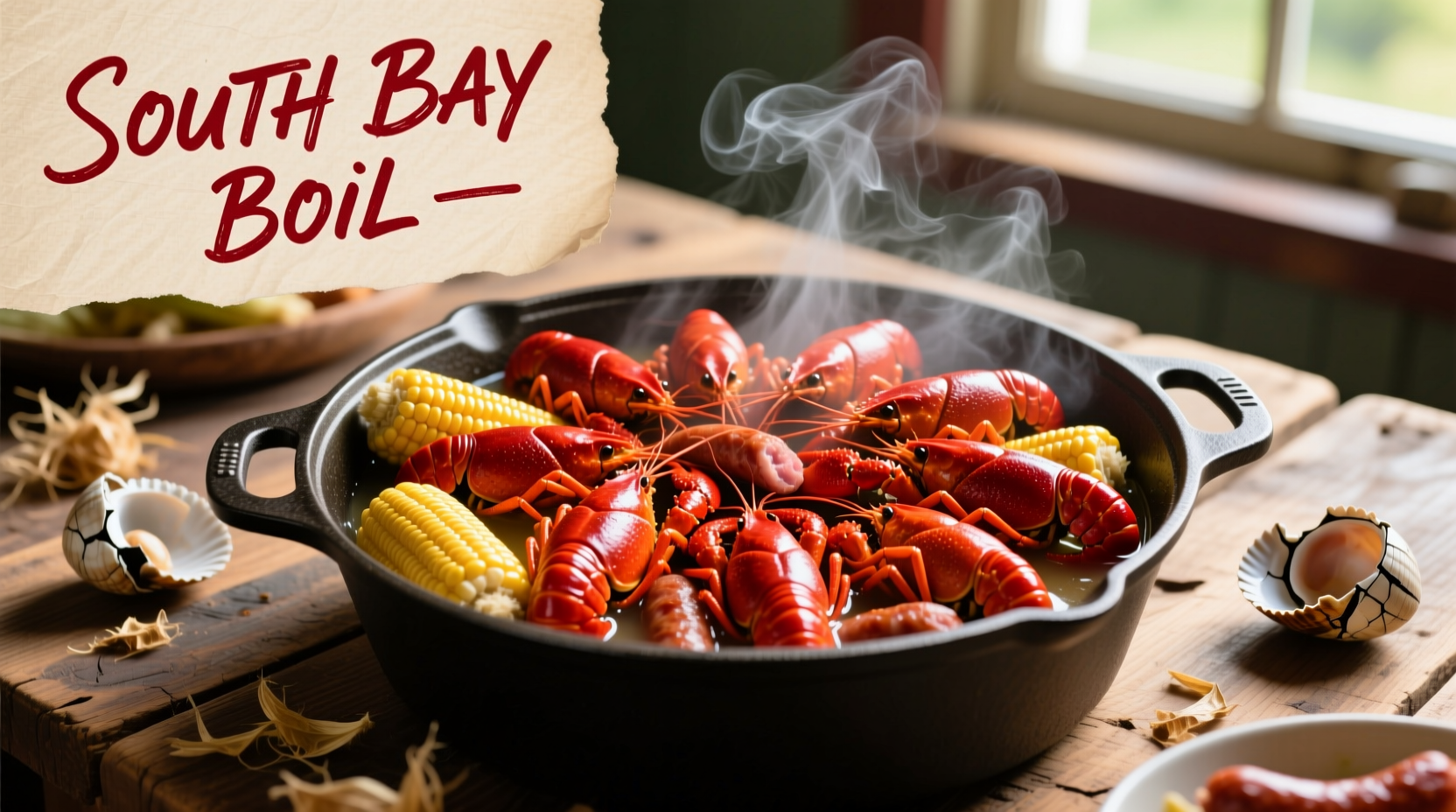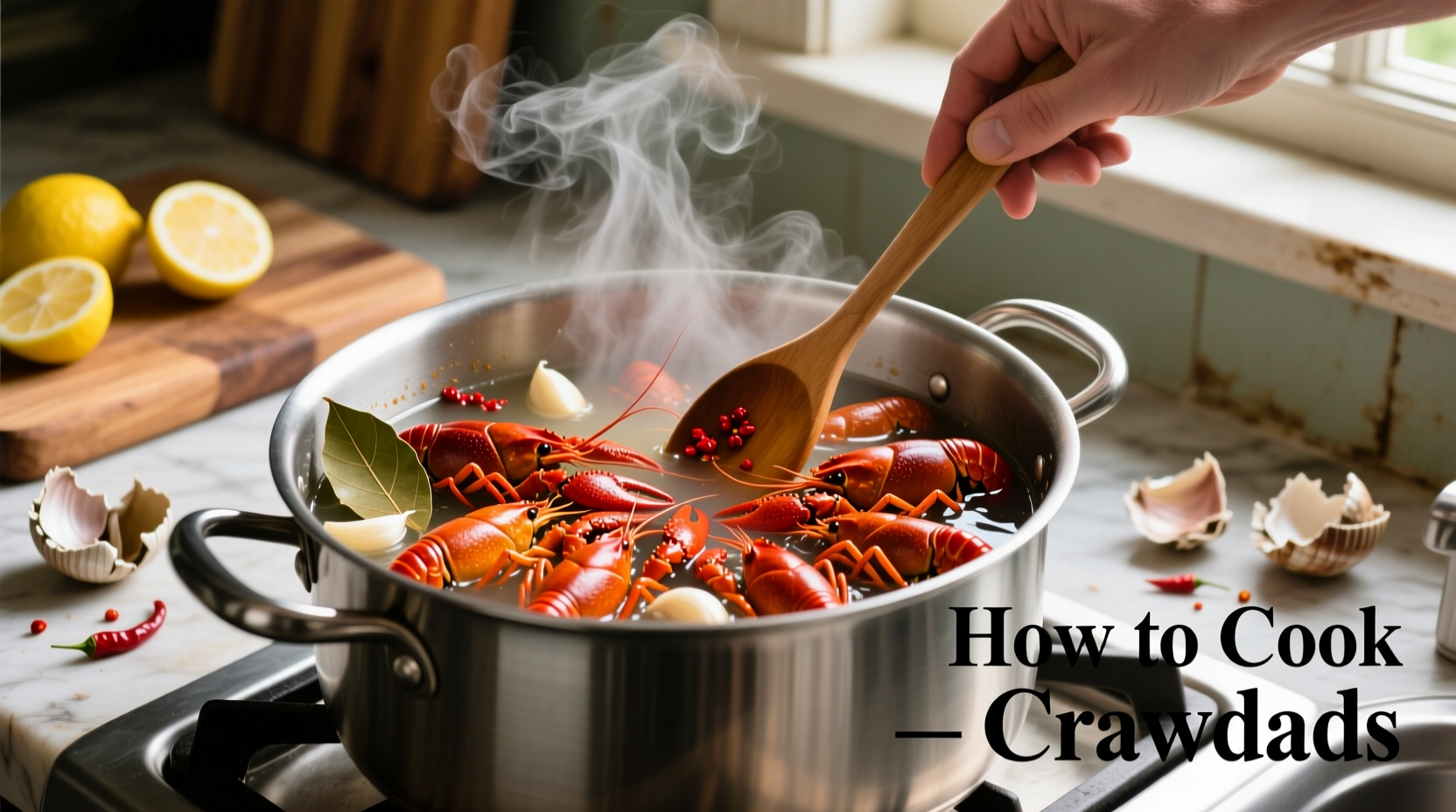Learn exactly how to cook crawdads properly with this step-by-step guide developed through decades of Southern culinary tradition. Whether you're hosting your first crawfish boil or refining your technique, these proven methods ensure perfectly cooked crawdads with the ideal spice balance and texture.
Your Complete Roadmap to Perfect Crawdad Preparation
Before you start cooking, understand the complete journey from live crawdads to your dinner plate. This guide follows the exact sequence professional boil masters use, addressing each critical phase where mistakes commonly happen.
Sourcing Quality Crawdads: What Most Guides Get Wrong
Timing and selection make or break your boil. Crawdads are seasonal, with peak availability from December through June, according to the Louisiana State University AgCenter. During off-season, frozen crawdads work but require different handling.
When buying live:
- Choose active crawdads that move vigorously when handled
- Avoid specimens with cracked shells or missing claws
- Allow 3-5 pounds per person for a satisfying meal
| Selection Indicator | Acceptable | Avoid |
|---|---|---|
| Shell Color | Bright red or brown | Pale or grayish |
| Activity Level | Vigorous movement | Lethargic or unresponsive |
| Claw Condition | Intact and strong | Cracked or missing |
The Critical Purging Process: Why Skip This at Your Peril
Most home cooks skip proper purging, resulting in gritty, muddy-tasting crawdads. The University of Florida IFAS Extension confirms that purging removes intestinal contents that affect flavor. Follow this professional method:
- Place live crawdads in a large container with cool water
- Add 1 cup of salt per 5 gallons of water
- Let sit for 20-30 minutes (no longer—this stresses them)
- Discard any floating crawdads (indicates poor quality)
- Rinse thoroughly under running water
"Proper purging transforms the eating experience," explains Antonio Rodriguez, whose culinary expertise spans professional kitchens and backyard boils. "Skipping this step means you're essentially cooking with the crawdads' last meal still inside."
Essential Equipment Checklist
You don't need specialized gear, but these items make the process safer and more effective:
- 30-40 quart pot with basket (standard for 10-15 pounds)
- Outdoor propane burner (indoor boiling creates overwhelming steam)
- Heavy-duty gloves for handling hot pots
- Long-handled tongs for safe retrieval
- Plastic tablecloth for traditional serving
Classic Louisiana-Style Boil: Step-by-Step
This method follows the seasoning ratios perfected by Louisiana boil masters, documented by LSU AgCenter's culinary research:
- Fill pot 2/3 full with water
- Add 1 cup liquid crab boil concentrate
- Add 1/2 cup salt, 1/4 cup cayenne, 1/4 cup black pepper
- Bring to rolling boil (212°F)
- Add 1 dozen garlic cloves, 1 lemon (halved), 1 onion (quartered)
- Add 2 pounds small potatoes (pre-boiled 10 minutes)
- Add 2 ears corn (halved)
- Add 1 pound smoked sausage (sliced)
- Boil 15 minutes to infuse flavors
- Add 10-15 pounds purged crawdads
- Return to boil, then simmer 5 minutes
- Turn off heat, add ice to stop cooking
- Let steep 15-20 minutes for maximum flavor absorption
The National Oceanic and Atmospheric Administration (NOAA) confirms that proper cooking requires maintaining water temperature above 145°F for at least 5 minutes to ensure food safety while preserving texture.
Cooking Time Guidelines for Perfect Results
Overcooking turns crawdads rubbery. Follow these precise timing guidelines:
| Component | Pre-Boil Time | Steep Time |
|---|---|---|
| Crawdads | 5 minutes | 15-20 minutes |
| Potatoes | 10 minutes | 15-20 minutes |
| Corn | 5 minutes | 15-20 minutes |
| Sausage | 15 minutes | 15-20 minutes |
Serving Tradition: More Than Just Dumping on the Table
The authentic experience matters as much as the cooking:
- Spread newspaper or plastic over tables
- Use a slotted basket to drain excess liquid
- Provide mallets for cracking claws
- Serve with French bread for soaking up seasoning
- Offer lemon wedges and melted butter for dipping

Avoiding Common Cooking Mistakes
Even experienced cooks make these critical errors:
- Overcrowding the pot: Cook in batches for even seasoning
- Adding crawdads to cold water: Always add to boiling liquid
- Boiling instead of steeping: Extended boiling makes meat tough
- Under-seasoning: Scale up spices for larger batches
- Skipping the ice step: Stops cooking immediately for perfect texture
Safety First: Handling Live Crawdads Properly
The FDA Food Code recommends these safety practices:
- Keep live crawdads refrigerated until ready to purge
- Never store in airtight containers (they need oxygen)
- Wash hands thoroughly after handling
- Cook within 24 hours of purchase for best quality
- Discard any that die before cooking (indicates spoilage)
Storing Leftovers: Preserving Flavor and Texture
Proper storage maintains quality for up to 2 days:
- Cool completely before refrigerating
- Store in airtight containers with some cooking liquid
- Reheat gently in simmering water (not microwave)
- Never refreeze previously frozen crawdads
Seasoning Variations for Different Palates
Adjust the classic recipe for various preferences:
- Mild version: Reduce cayenne to 2 tablespoons
- Lemon-herb: Add 1/4 cup fresh dill and extra lemon
- Garlic-forward: Double garlic and add 2 tablespoons garlic powder
- Spicy Cajun: Add 2 tablespoons hot sauce and extra cayenne











 浙公网安备
33010002000092号
浙公网安备
33010002000092号 浙B2-20120091-4
浙B2-20120091-4